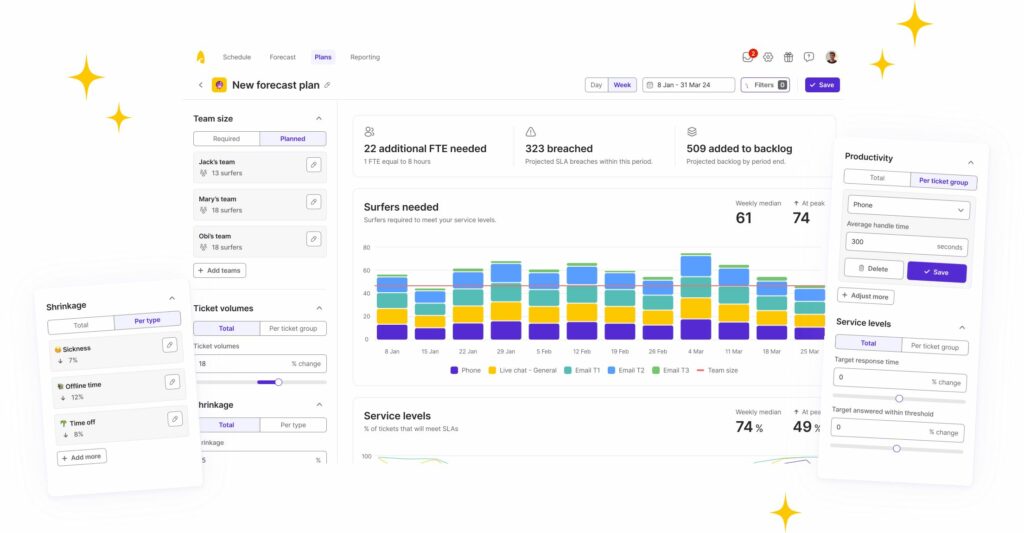
Why good scenario planning is the backbone of any successful support team

Whether it’s Black Friday, changes to the energy price cap, a big sale, a big sports event or a product release, customer support teams across any industry have to spend time planning for different events.
A lot of this happens in spreadsheets and can be done by a number of different people.
Whether it’s a Head of Customer Support justifying to a CFO why they need additional resourcing or presenting a plan to the Leadership team on how service levels will be maintained, team leaders visualising to their team why they need to be open extended hours to clear building backlogs, or project managers ensuring that the broader company is prepared for the influx in tickets, this type of work is necessary but unfortunately fragmented with no single source of truth.
Plan proportionally to the impact of the event
Depending on the number of days that will be impacted by the scenario or event you are planning for, you should plan at least one week per impacted day ahead. That means if you’re expecting a day of expected changes, your planning should happen at least one week in advance. If you are expecting five days of impact or disruption, you should be planning five weeks in advance.
Oliver Bonas, a popular UK based retail and ecommerce provider said to us in September “we’re already in the Christmas season”.
The same is felt by energy suppliers preparing for changes to the energy price cap, or travel insurance providers before the holiday season (especially if an adventurous sport like skiing is involved!)
Some events have an impact that can last months. For a retail company like Oliver Bonas people are buying Christmas presents from November and then returns can peak in December and January. Planning for peaks of this magnitude involves months of planning that all happens over the summer.
Identify what your constraints are
When planning for a scenario it’s unlikely you’ll be able to pull out all the stops with no constraints. You might be constrained in that you need to continue to meet service levels despite higher inflow (especially if you’re in a regulated industry), you might be constrained that you can’t add headcount and will have to accept lower service levels or a higher backlog, or you might be constrained by productivity if you’re adding new joiners or temporary outsourcing agents (BPOs).
Once you know your constraints, you can focus on the levers you have at your disposal to identify how you account for these different events; whether it’s ramp up of new joiners or preparing for a seasonal event.
Be clear on what you’re optimising for
This might be cost, your service level performance (first response time) or the size of your email backlog. Based on what you are trying to achieve, you can then flex the different parameters you have to achieve your desired results and identify what you need to do to get there.
If you have a fixed headcount but are willing to tolerate slower response times, you might be worried about building up an email backlog at the same time. With good scenario planning, you don’t need to hire more people. You can identify what first response time might be tolerable for you (maybe you pick up your calls in five minutes rather than 60 seconds, or reply to emails within 12 hours instead of 6). And you can see if you can work with your existing team on an out of hours or overtime scheme to avoid backlogs from building up that become hard to clear later.

Use software that can help automate your planning
With most scenario planning still happening on disparate spreadsheets, there’s an opportunity to consolidate tools and have scenario planning sit within your broader workforce management software.
That’s why Surfboard has inbuilt scenario planning for users to plan for different circumstances within one unified tool, connecting forecasting, scheduling and performance data. Bringing scenario planning into the mix means that you can now connect everything together so that you’re never caught off-guard.
Book a demo to learn more



